| ||||||

|
Books
17 Art-Related Beach Reads for Your Summer Vacation, From a Crime Thriller Set in Berlin to a History of Napoleonic Plunder
Looking for an art-heist thriller? Or maybe some escapist fare? We've got something for everyone.

As we enter the long, hot month of August, Artnet News’s editors have compiled their must-read list of new art-related books to add to your summer reading list.
ART HISTORY
Paper Bullets: Two Artists Who Risked Their Lives to Defy the Nazis
by Jeffrey H. Jackson

This is the first book to trace the history of a daring anti-Nazi campaign undertaken by a pair of French women, Lucy Schwob and Suzanne Malherbe, better known today by other names: Claude Cahun and Marcel Moore.
The women built on their talents as Parisian avant-garde artists to write and distribute “paper bullets”—vicious insults against Hitler, calls to rebel, and subversive imagined dialogues designed to demoralize Nazi troops occupying their adopted home on the British Channel Island of Jersey. Effectively devising their own propaganda campaign, they slipped their notes into soldier’s pockets or tucked them inside newsstand magazines. Hunted by the secret field police, Schwob and Malherbe were ultimately betrayed in 1944, after which they were imprisoned, court martialed, and sentenced to death. MIraculously, they survived, and even while imprisoned they continued to fight the Nazis by reaching out to other prisoners and spreading a message of hope.
—Eileen Kinsella
The House of Fragile Things: Jewish Art Collectors and the Fall of France
by James McAuley
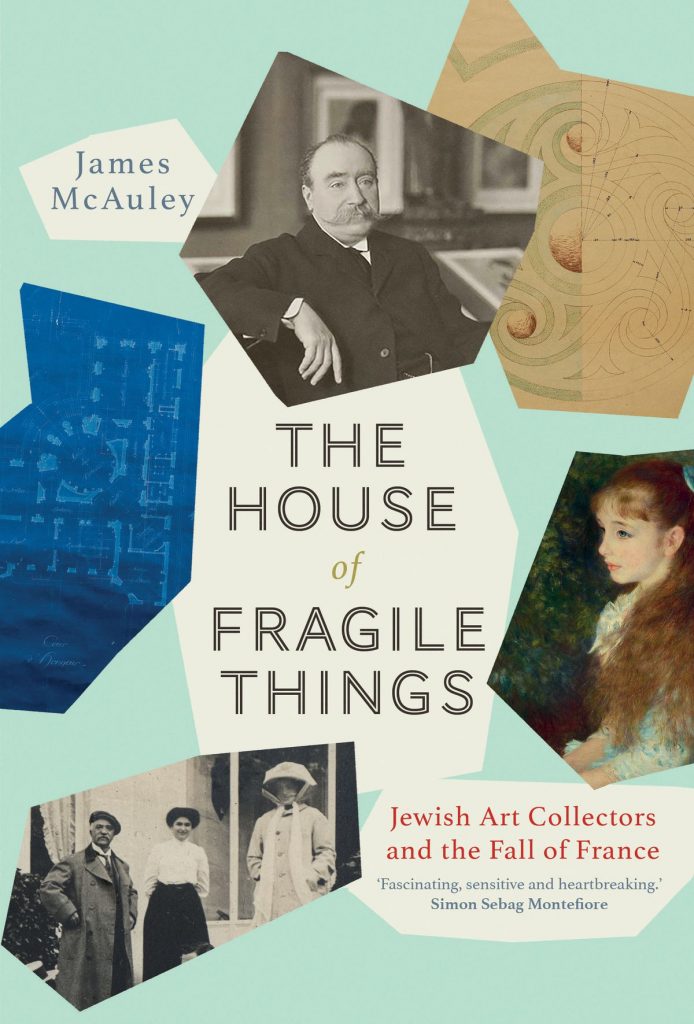
In the years between 1870 and the end of World War II, a number of prominent French Jews invested their fortunes in France’s cultural artifacts—and sacrificed their sons to the country’s army. Despite the significant contributions of the Jewish community, many saw their collections plundered as they and their families were deported to Nazi concentration camps.
James McAuley, the Paris correspondent for the Washington Post, weaves a rich, engrossing tale as he delves into the central role that art and material culture played in the assimilation and identity of Jews in fin-de-siècle France. By combining the narratives of prominent figures such as Marcel Proust and the diaries of Jules and Edmond Goncourt, McAuley tells the stories of prestigious families like the Rothschilds and Cahen d’Anvers, illustrating how—despite their passion for the art and culture of their country—they were often labelled as invaders.
—Eileen Kinsella
Plunder: Napoleon’s Theft of Veronese’s Feast
by Cynthia Saltzman
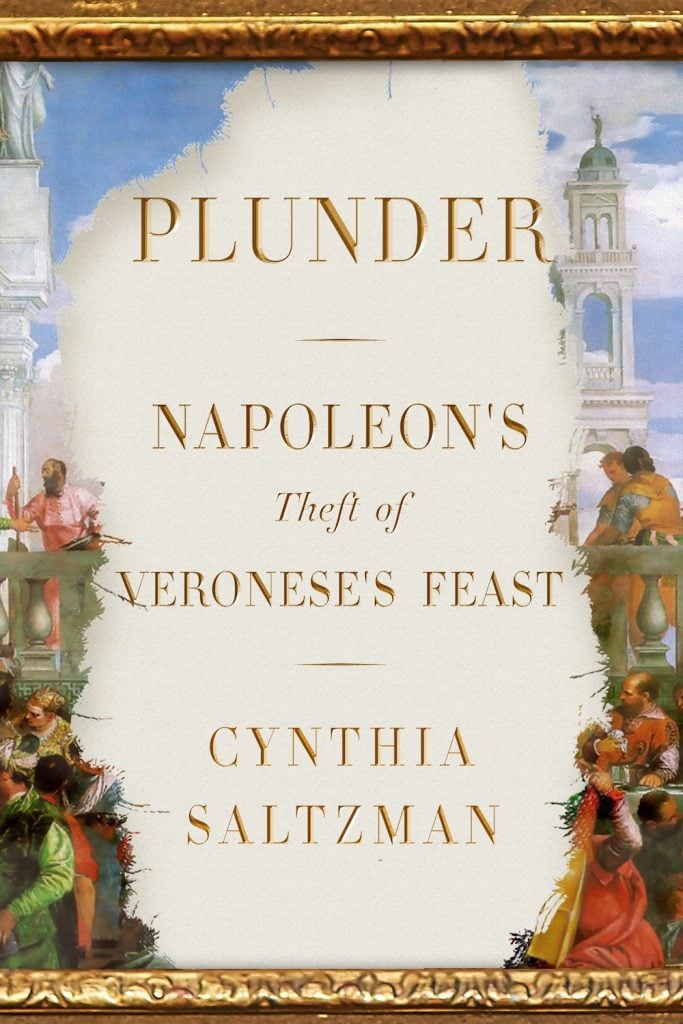
Napoleon gets a lot of credit as a military mastermind. But while he was winning battles across Europe, he also plundered the great art collections of the continent, amassing what is still perhaps the world’s preeminent museum at the Louvre in Paris. In this nonfiction account of one of history’s most calculated campaigns of art looting, Cynthia Saltzman focuses on the biggest and most fragile painting that Napoleon stole, The Wedding at Cana, a 1563 Renaissance masterpiece by Paolo Veronese. The author presents a detailed reckoning of the artwork’s ill-advised removal from and perilous journey from Venice to France, where the treasures of Italy were paraded through the city in a show of military might. Though many paintings were returned after Napoleon’s fall from power, this trophy remains at the Louvre through this day, serving a reminder of the former French emperor’s ruthless pursuit of greatness, both on the battlefield and in the realm of culture.
—Sarah Cascone
Chasing the Thrill: Obsession, Death, and Glory in America’s Extraordinary Treasure Hunt
by Daniel Barbarisi
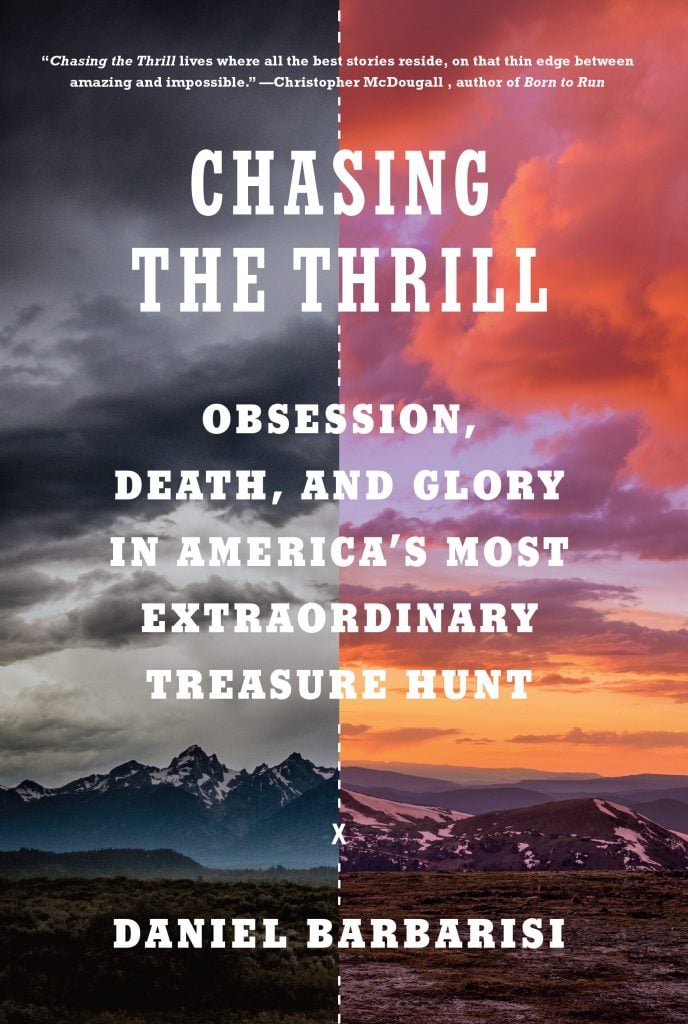
In 2017, Artnet News wrote a story about a real-life treasure hunt organized by eccentric New Mexico art and antiquities dealer Forrest Fenn, and how it had turned deadly, leaving at least two searchers dead. Journalist Daniel Barbarisi was following the story on the ground, interviewing Fenn as well as some of the thousands of hopefuls aiming to solve the mystery and recover the chest full of gold hidden somewhere in the Rockies. Last year, the hunt came to an end when someone did just that. Mere months later, Fenn died at age 90.
In this stranger-than-fiction book, Barbarisi—who identified the finder, Jack Stuef—brings readers into the drama-filled world of Fenn and his followers, their countless theories on how to interpret the poem concealing the treasure’s location, and the many controversies that plagued the hunt over its 10-year existence. It’s a fascinating page-turner, even if Barbarisi frustratingly leaves readers hanging as to the final location of the treasure.
—Sarah Cascone
FICTION
Other People’s Clothes
by Calla Henkel
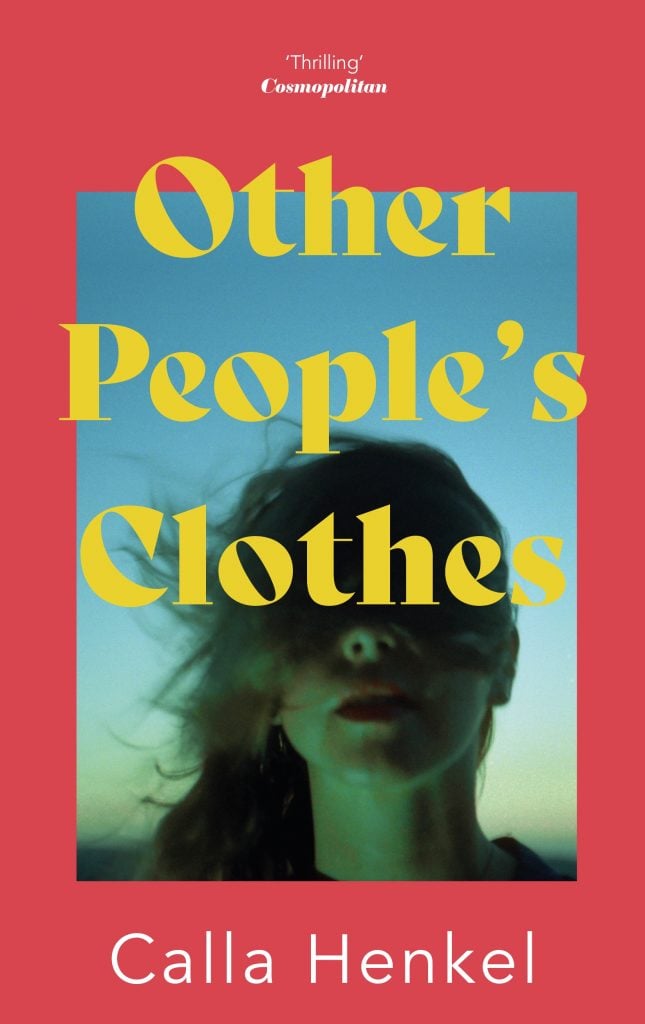
American artist Calla Henkel, who is shortlisted along with her long-time collaborator, Max Pitegoff, for the 2021 Preis der Nationalgalerie, makes her fiction debut with Other People’s Clothes, a darkly funny crime thriller set in the Berlin expat art scene in the late aughts. Colorfully bringing to life its many corners—vapid, banal, and glamorous in twists and turns—Henkel’s book follows two millennial New York art students to the German capital, where they land for a semester abroad in a sublet that happens to be the home of a famous novelist. Soon curators, dealers, and artists are stomping through their life, partying in their in-house club, and the two start to create an art project-cum-social media platform for themselves. In the sunset era of it-girls—a decade presided over .JPEGS, Chloe Sevigny, and Britney Spears—Henkel draws up a dazzling and vaudevillian image of the art world, one that feels all too strange and too real at once.
—Kate Brown
The Last Mona Lisa: A Novel
by Jonathan Santlofer
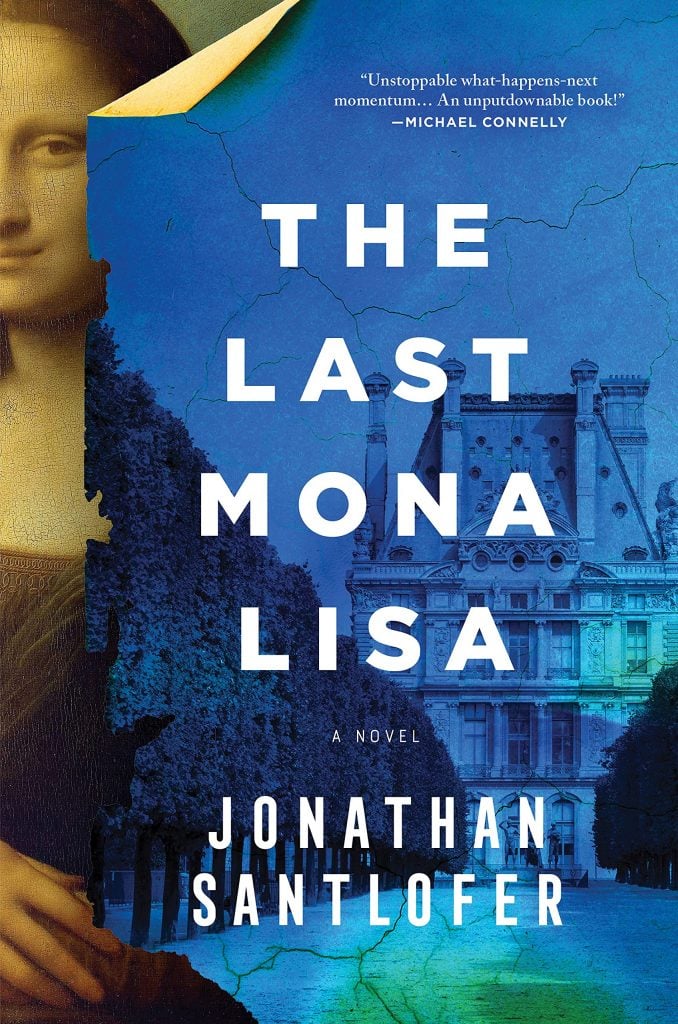
This surprisingly engaging thriller turns to art history and the 1911 theft of what is now likely the world’s most famous painting, the Mona Lisa. Luke Perrone, the great-grandson of the thief, Vincent Peruggia, gets more than he bargained for when he heads to Florence to examine a family manuscript. It turns out both Interpol and elements of the criminal underworld are also interested in its contents, which may reveal a shocking truth about the aforementioned Leonardo da Vinci painting in the Louvre. Did the police ever recover the real Mona Lisa, or has a clever forger fooled the world for over a century? With romance, mystery, and near-death experiences, this book checks all the boxes for a scintillating summer read.
—Sarah Cascone
Da Vinci’s Cat
by Catherine Gilbert Murdock
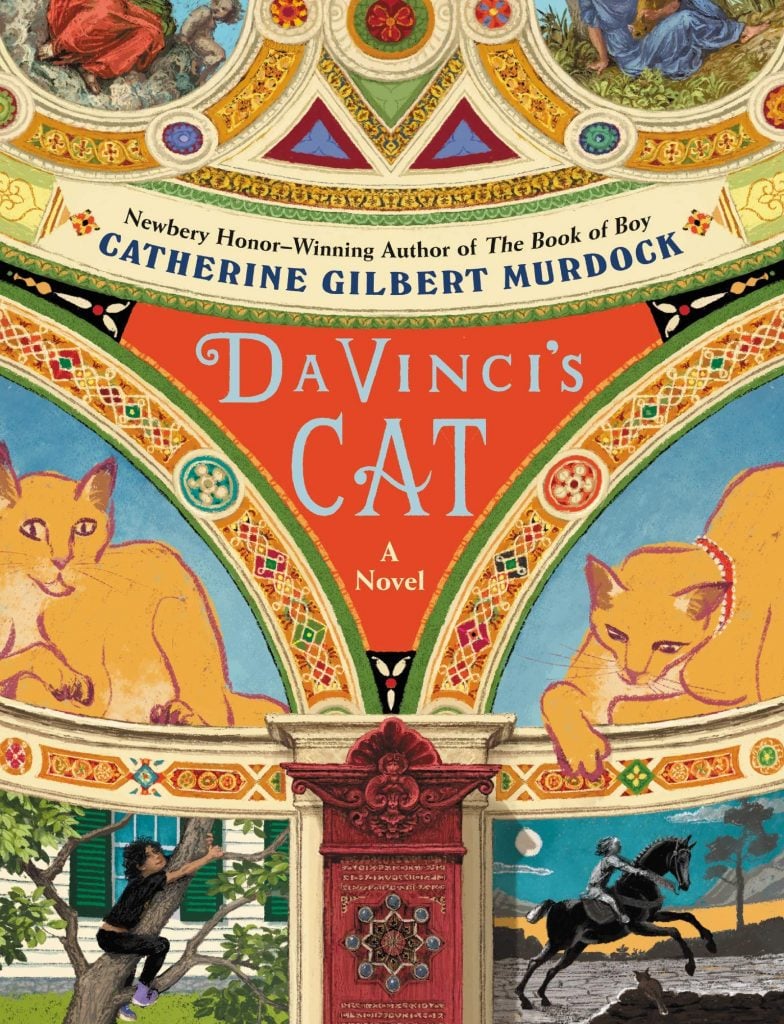
This delightful children’s book combines fantasy and art history for a time-traveling tale that takes Leonardo da Vinci’s genius—and his lost cat—to parts unknown. Is it really such a stretch to think that the Renaissance master might have also invented a time machine linking 16th-century Rome and modern-day New Jersey, forging an unlikely friendship between two 11-year-olds that spans the centuries? Raphael and Michelangelo also appear in this fun, inventive novel.
—Sarah Cascone
Lenora in the Morning Light
by Michaela Carter
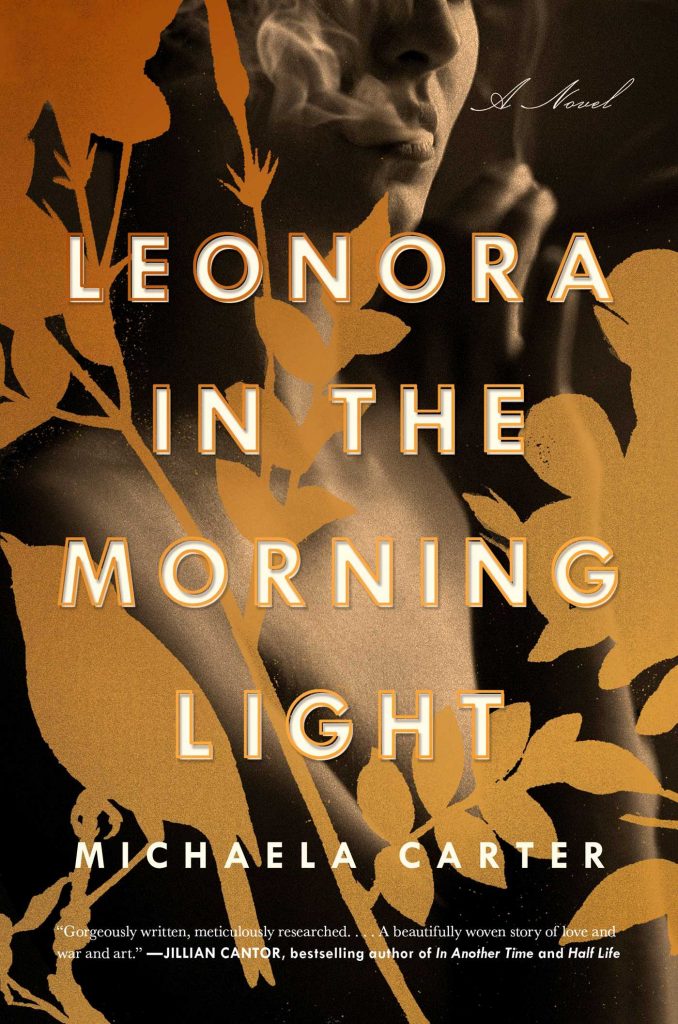
After curator Cecilia Alemani revealed that the theme of the next Venice Biennale was inspired by the surrealist artist Leonora Carrington, many are looking to brush up their knowledge on the 20th-century British-born Mexican artist, surrealist painter, and novelist. And what better way to do so than with a fictionalized version of her fascinating life?
Carter’s novel follows Carrington as her life in London is upended by an encounter with the German surrealist Max Ernst. They embark on a tumultuous relationship that takes them to Paris, where they are immersed in the milieu of the other main protagonists of the Surrealist movement: Andre Breton, Man Ray, and Salvador Dalí. But their days of enlightenment are interrupted by the onset of World War II. When their artistic pursuits become those of “degenerates,” Ernst is arrested, and they are separated after he flees to the U.S. with the help of Peggy Guggenheim. The novel follows Carrington through the trauma of occupation, heartbreak, and psychosis, with the back of the book synopsis promising “an unforgettable story of love, art, and destiny that restores a 20th-century heroine to her rightful place in our collective imagination.”
—Naomi Rea
A Theatre for Dreamers
by Polly Samson
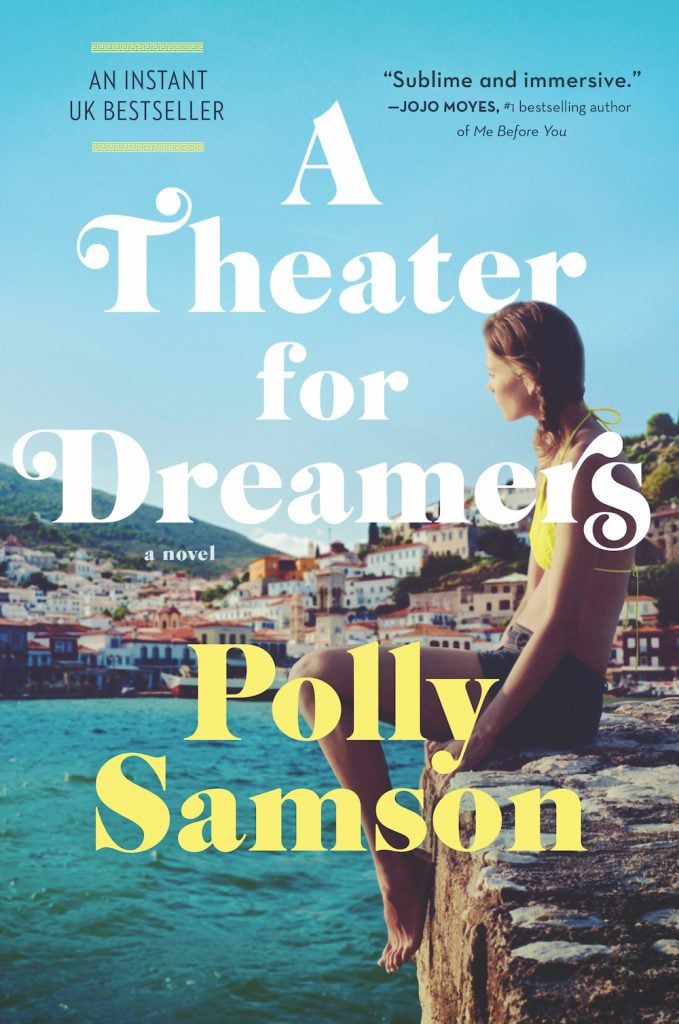
Here’s your chance for a vicarious escape to the island of Hydra in Greece circa 1960, especially as pandemic-related travel restrictions continue mid-2021. When 18-year old Erica arrives on the island, she struggles to balance her dream of becoming an artist and writer in her own right, with the demands of her boyfriend, who expects her to handle the domestic chores while he pursues his own path as a writer. As the summer winds on, tensions mount and Erica is drawn into this creative battle of the sexes, forcing her to decide which path to take.
—Eileen Kinsella
The Bohemians
by Jasmin Darznik
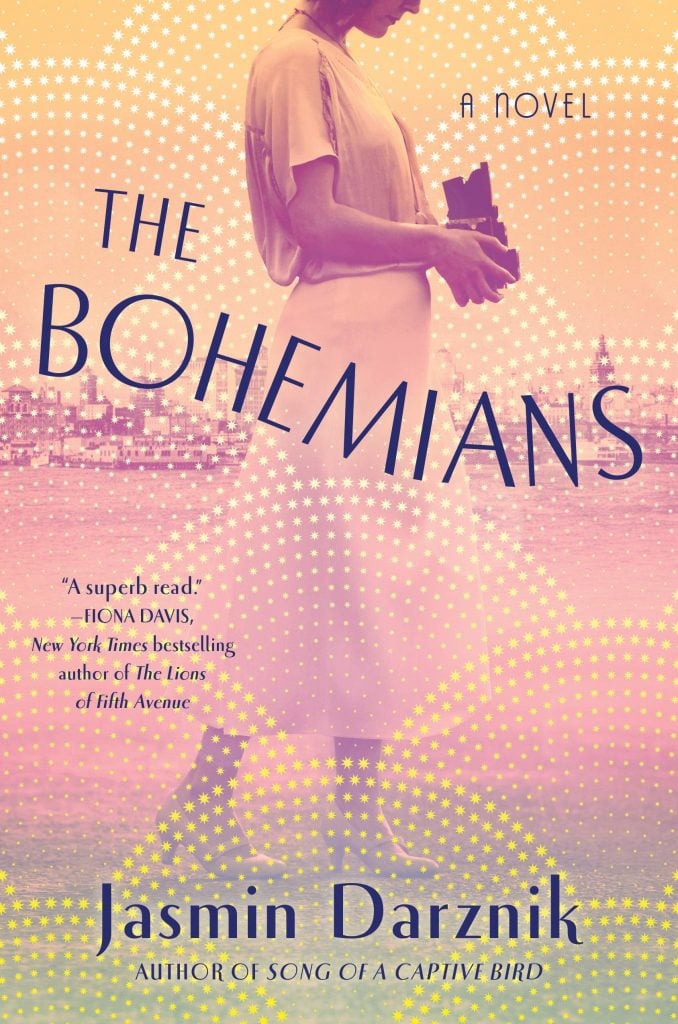
Jasmin Darznik transports readers to Jazz Age San Francisco in this novel about the early career of photographer Dorothea Lange. Arriving in the Bay Area as a 23-year-old in 1918, Lange quickly makes a (mostly fictional) Chinese American best friend and is introduced to to Monkey Block, a bohemian artists’ colony on the site of what is now the Transamerica Building, the most recognizable feature on the modern skyline. (There are cameo appearances from the likes of Frida Kahlo, Ansel Adams, and D. H. Lawrence.) But while the world has been dramatically transformed over the past century, Lange’s San Francisco is surprisingly relevant to modern day readers, with the young photographer witnessing political corruption, anti-immigrant sentiment—one character is based on Senator John Phelan, of the 1920 campaign slogan “Keep California white”—and a pandemic in the form of the Spanish flu. Darznik presents these events as forces that led Lange to her future career-making work documenting rural poverty for the Farm Security Administration during the Great Depression.
—Sarah Cascone
The Forger’s Forgery
by Clay G. Small
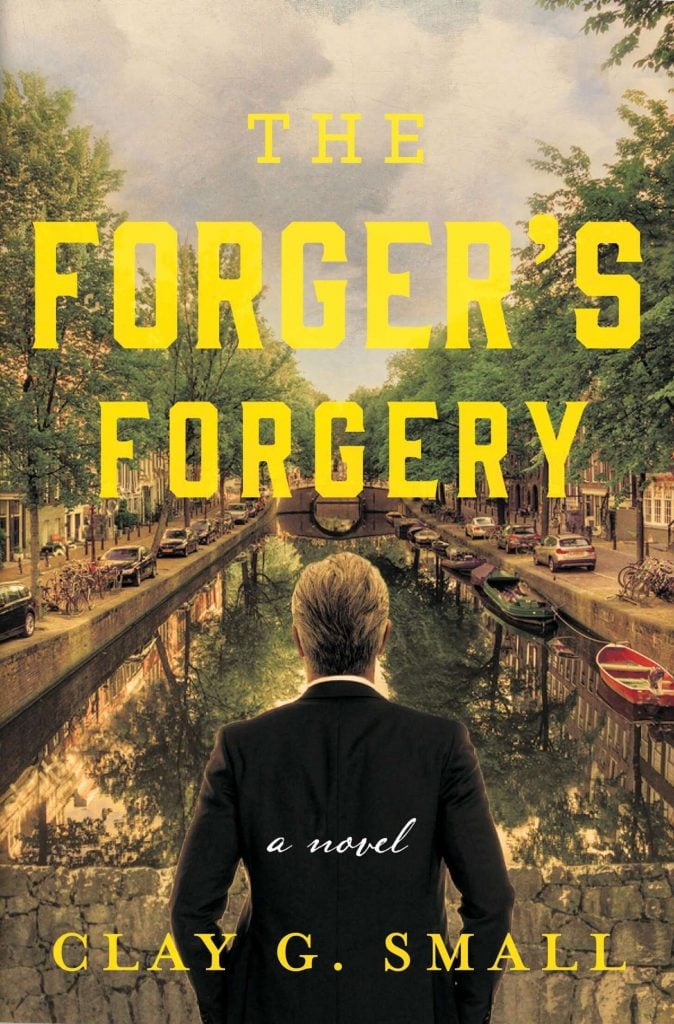
This international tale stretches from Dallas to Amsterdam, following professor Henry Lindon as he hatches a daring plan based on a particularly infamous chapter in art history: Han van Meegeren’s notorious forgeries of Dutch Golden Age Master Johannes Vermeer. Lindon’s upstairs neighbor, Bernadette Gordon, has just written a hit novel about the artist and how he found himself on trial for selling the nation’s artistic treasures to the Nazis. (To prove his innocence, Van Meegeren had to admit to being a forger, a defense that was only accepted when he painted a new “Vermeer” live in court.) With the help of a savvy publicist and a talented painter, Lindon and Gordon just might be able to channel the renewed public interest in Van Meegeren’s life into a con of their own—for a good cause. The rather outlandish plot is counterbalanced by a likable cast of characters who come together to outwit Guy Wheeless, an unsavory Wichita businessman and serial sexual predator, when the law fails to bring him to justice.
—Sarah Cascone
A Discerning Eye
by Carol Orange
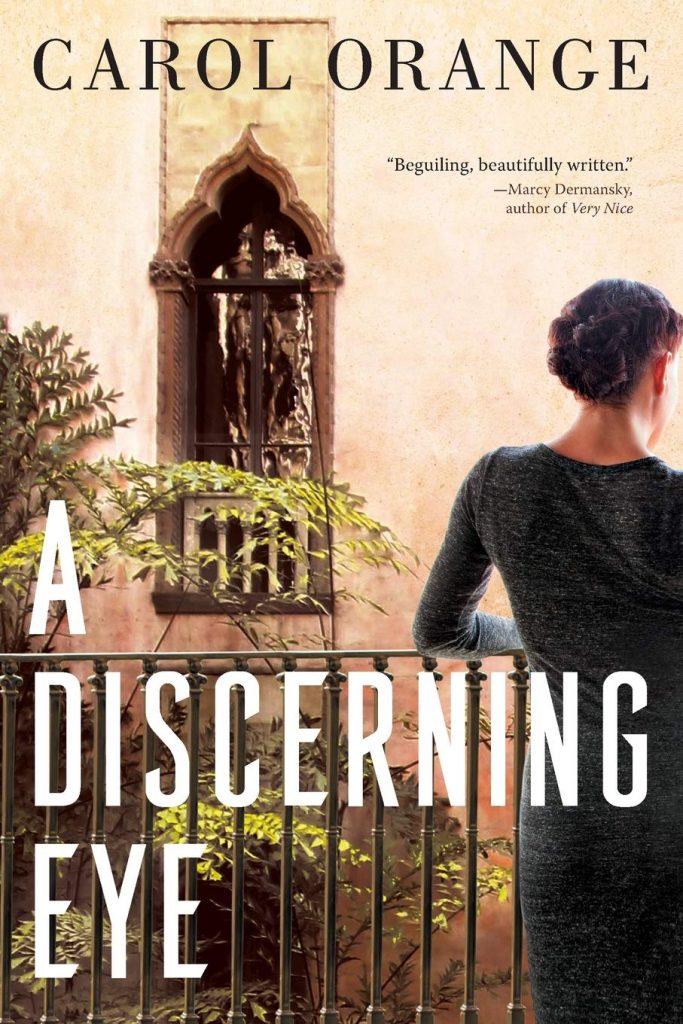
The world’s most valuable art heist, the 1990 robbery of Boston’s Isabella Stewart Gardner Museum, continues to captivate the world’s imagination. Carol Orange has fabricated a wild tale to explain the infamous, still-unsolved robbery that falls squarely into the guilty-pleasure beach read category. Art dealer Portia Malatesta, a docent at the museum, becomes deeply invested in recovering the missing paintings, attempting to draw up a psychological profile of the thief. Suspend your disbelief as her work attracts the attention of the FBI, pressing her into unlikely service on the ground in Colombia, where a drug lord has become the lead suspect in the case. (The real-life consensus is that Boston’s Italian mafia was behind it.) The dialogue can be a bit clunky, but it’s a fun bit of escapist fiction that offers a fun “what if” look at a real-world event that still makes headlines more than 30 years later.
—Sarah Cascone
Antiquities
by Cynthia Ozick

Cynthia Ozick’s latest novel is told from the perspective of Lloyd Wilkinson Petrie, a bitter, aging trustee of a long-ago-closed boarding school in whose dormitories he has returned to live. Petrie, whose memory is beginning to fail, struggles to write a brief memoir of his time at the school, which brings back stirring memories of his childhood encounter with fellow pupil Ben-Zion Elefantin, an unpopular boy who arrived at the academy one day claiming to have descended from an island in Egypt. The antiquities of Ozick’s title refer to a collection of ancient Egyptian artifacts that Petrie’s father collected, one of which becomes the central totem of a transformative experience the two boys share one night. Ozick’s story, which tracks Petrie as he grapples to make sense of the experience decades later, is written in her characteristically noble manner, and is marked by the irony fans of her work admire.
–Pac Pobric
ART AND TRAVEL
Artistic Places
by Susie Hodge
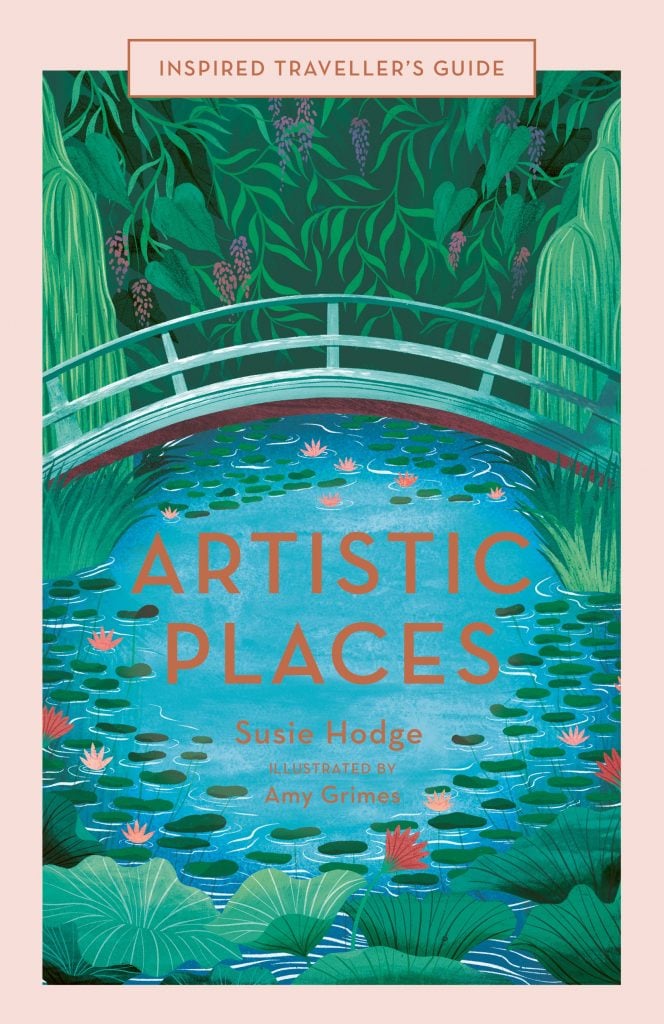
If the rise of the Delta variant has curtailed your ambitious summer travel plans this summer, this beautifully illustrated escapist gem is the perfect thing to bring to the beach. The book features 25 beautiful places around the world, pairing them with the artists they have inspired throughout art history—think Claude Monet and Giverny, Canaletto and Venice, and New Mexico and Georgia O’Keeffe. And it’s not just the artwork benefitting from the beauty of the landscape. “Often, as art captures a place, that place becomes imbued with a richness, a mystery, and even a sense of celebrity,” wrote Hodge.
—Sarah Cascone
Artists in Residence: Seventeen Artists and Their Living Spaces, From Giverny to Casa Azul
by Melissa Wyse; Illustrated by Kate Lewis
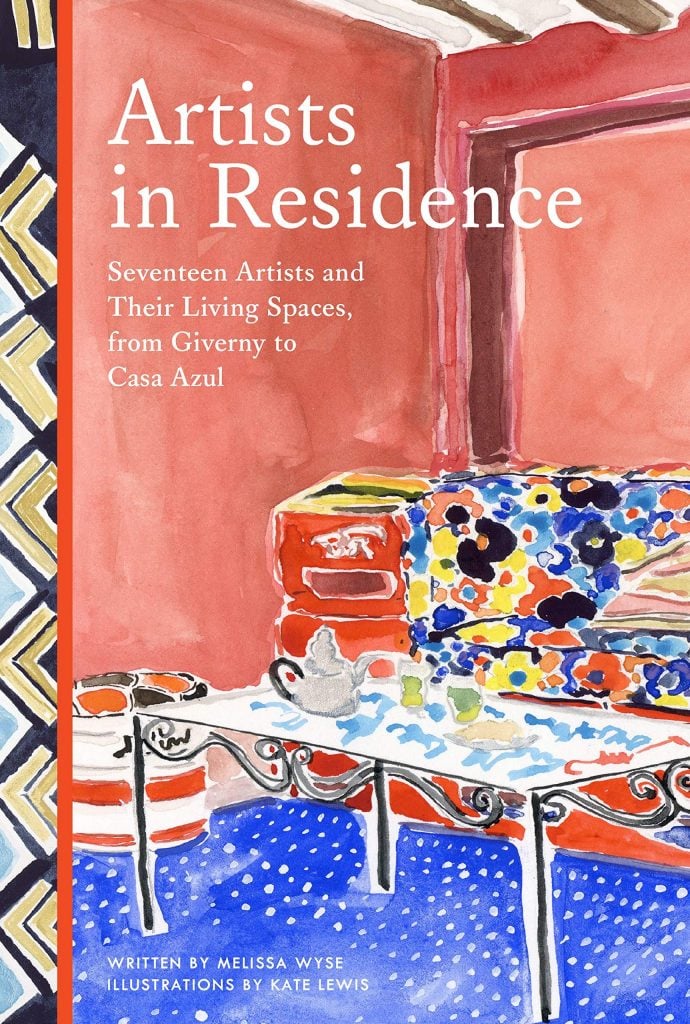
If getting lost in the lives—and living spaces—of artists seems an ideal way to pass long summer days, allow Artists in Residence to be your fantasy conduit. This compact book delves into the intimacies and idiosyncrasies of the homes of ultra-famous artists like Frida Kahlo, Louise Bourgeois, and Henri Matisse, as well as those of several lesser well-known but equally-fascinating artists such self-taught American painter Clementine Hunter. Let’s stop right here to clarify that there are actually no photographs of these spaces in the book, if that’s what you’re after. Instead, we’re brought on a journey of the imagination through the delightful and plentiful illustrations of Kate Lewis and the richly descriptive prose of Melissa Wyse. Wyse is a researcher and spent years penning notes about these artists’ homes, only to meet Lewis in a residency program, setting off this utterly original collaboration, which is itself an exploration of how the places we inhabit can affect our creative selves.
—Katie White
Amazing Art Adventures
by Yolanda Zappaterra
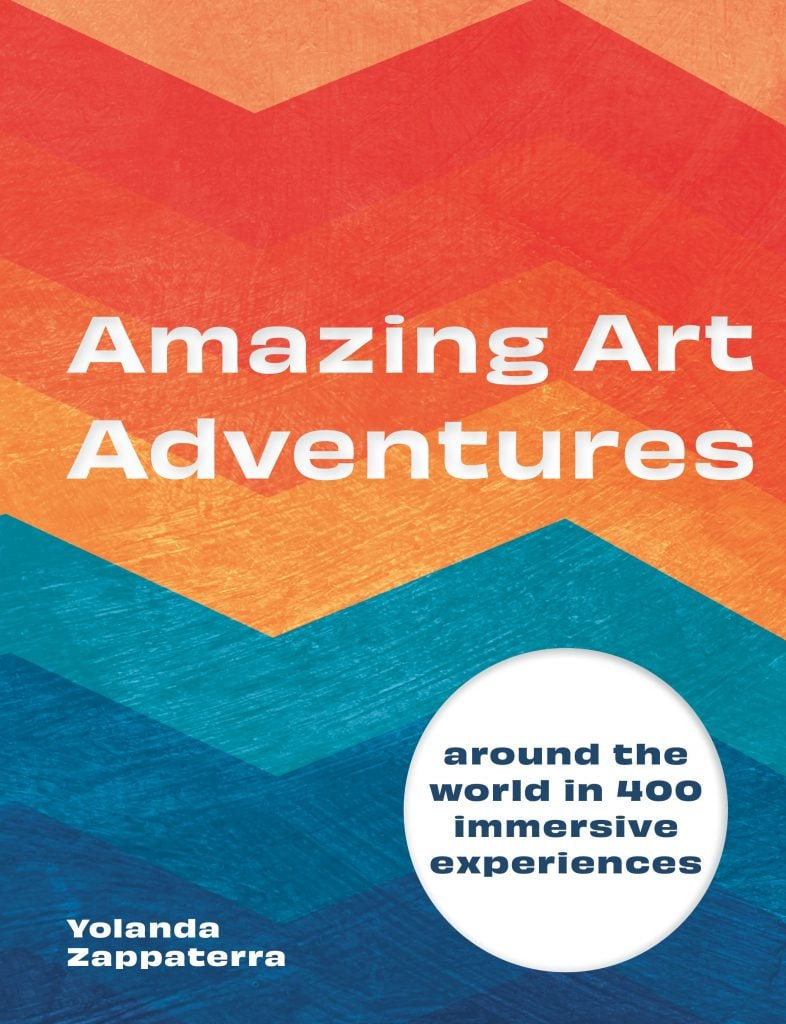
Amazing Art Adventures is a guide to hundreds upon hundreds of art and culture experiences all around the world, from far-flung art destinations to unforgettable sculpture parks. While travel might not be quite what we were hoping for this summer, this book lets planner types draw up their perfect itineraries for the future, whether it’s an excursion to see recycled ceramics at the Rock Garden of Chandigarh in northern India or a misty journey to Naoshima, Japan’s art island. The book also includes trails that trace important spots in famous artist’s lives or guides to seeking out the lesser-known treasures in museum collections. Even for the art-know-it-all, this book is full of discoveries waiting to be made.
—Katie White
Subpar Parks: America’s Most Extraordinary National Parks and Their Least Impressed Visitors
by Amber Share
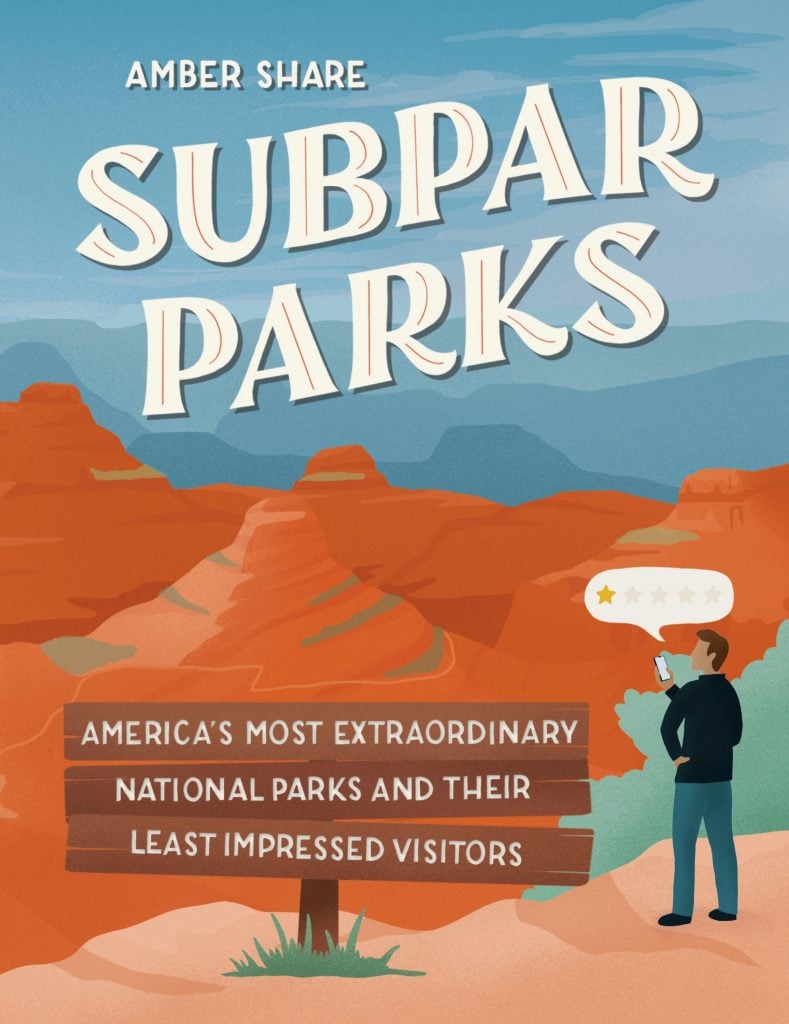
Amber Share’s viral art project pairs classic design with hilariously disappointed reviews of some of the most beautiful natural wonders in the U.S. The book features the full selection of her clever poster designs immortalizing ridiculous complaints such as “save yourself some money, boil some water at home” about Wyoming’s Yellowstone National Park. As an added bonus, you can also learn a bit about each of the nation’s 62 national parks in this visually pleasing celebration of the great outdoors.
—Sarah Cascone
Follow Artnet News on Facebook:
Want to stay ahead of the art world? Subscribe to our newsletter to get the breaking news, eye-opening interviews, and incisive critical takes that drive the conversation forward.

It looks like you're using an ad blocker, which may make our news articles disappear from your browser.
artnet News relies on advertising revenue, so please disable your ad blocker or whitelist our site.
To do so, simply click the Ad Block icon, usually located on the upper-right corner of your browser. Follow the prompts from there.
SHARE

